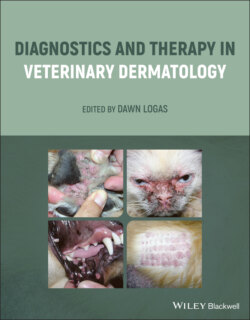Читать книгу Diagnostics and Therapy in Veterinary Dermatology - Группа авторов - Страница 58
Transmission Electron Microscopy
ОглавлениеTransmission electron microscopy () creates much higher‐resolution images than is possible with standard light microscopy. Transmission electron microscopes shine a high‐energy particle beam of electrons through a thin sample, such as a 1 μm thick sample of skin, to visualize the finest details of cellular structures. The wavelength of electrons is much smaller than that of light, and these electrons interact with atoms in tissue to create an image with extraordinary detail. For example, TEM was used to visualize the intercellular lipids of the stratum corneum to demonstrate differences in quality and distribution of lipids in atopic dogs (Dillard et al. 2018; Inman et al. 2001). A newer technique called cryo‐electron microscopy uses cold temperatures and vitreous ice to create three‐dimensional (3D) images of macromolecular structures (Dillard et al. 2018). This technique allows scientists to study the physical alterations of normal and diseased tissues. The technique is used mostly for research at this time.
